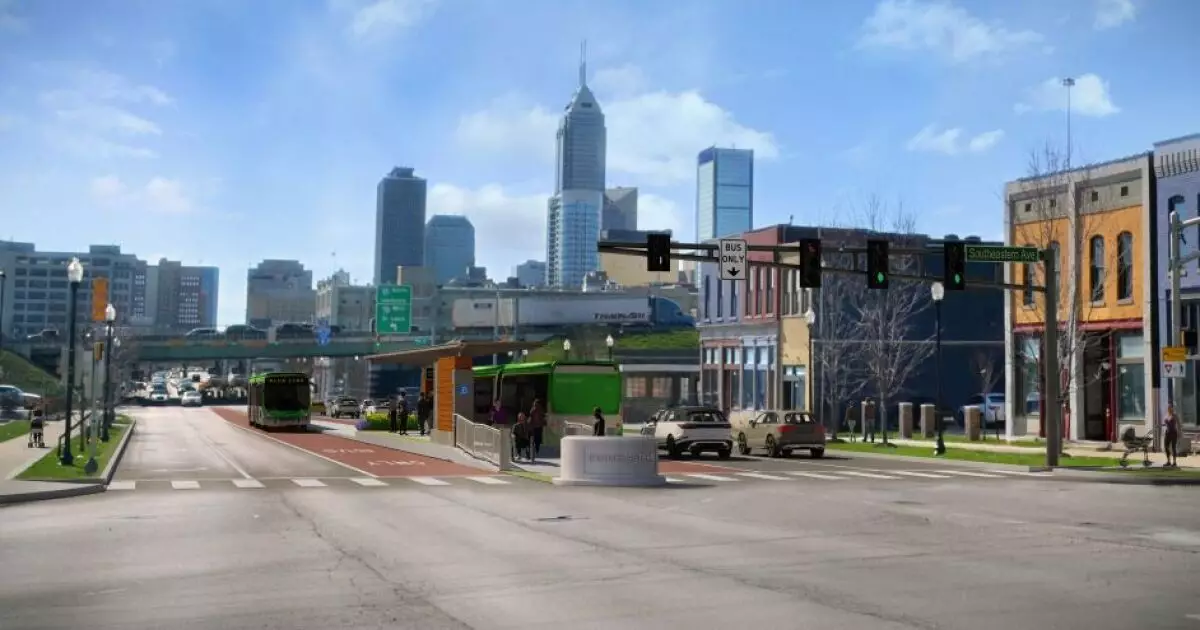In an ambitious push to modernize public transportation, IndyGo has set the wheels in motion for its Blue Line Bus Rapid Transit (BRT) project, a $125 million endeavor that will drastically improve transit service in Indianapolis. This 24-mile transit route promises not only enhanced connectivity between the Indianapolis International Airport and downtown but also aims to extend its reach to the far eastern edge of Marion County. The bond sale, intended to fund this project, reflects a broader recognition of the city’s need for efficient transportation solutions. Yet, the timing of this bond issuance, amid rising municipal yields influenced by economic volatility, raises questions about whether such a large investment is prudent at this juncture.
Market Turbulence: A Cautious Approach
Despite the high hopes surrounding the Blue Line, the market’s immediate response has been less than favorable. Joe Glass, the executive director of the Indianapolis Local Public Improvement Bond Bank, acknowledged that the tumultuous financial environment led to the deferral of the bond pricing. This hesitance is telling; it implies a cautious attitude towards municipal finance when conditions are anything but stable. As tariffs and inflation exacerbate uncertainties, pulling back on the timing of bond issuance seems not just wise but necessary. The underlying sentiment in the financial market suggests a level of trepidation that cannot be overlooked, especially when the economic forecast is far from rosy.
Why Bonds? Understanding Indiana’s Fiscal Strategies
Issuing bonds as a financing mechanism for essential public infrastructure is an age-old practice, and in this case, it reflects both a strategy to tap into local income tax revenues and the desire to stimulate economic growth through improved transportation access. The Series 2025A bonds are secured by a first-lien pledge of a 0.25% transportation local income tax, a structure designed to instill investor confidence. However, it is imperative to scrutinize not just the reliability of these revenue streams but also the overarching economic conditions. Given that IndyGo’s farebox revenues have seen a significant decrease—from 9.5% to around 5%—the financial health of the entire operation is crucial. Importantly, dependence on local taxation always comes with risks, particularly if economic dips lead to less disposable income for residents.
BRT vs. Light Rail: An Economic Argument
On a fundamental level, the Blue Line is touted as a “cost-effective” alternative to light rail systems. While this assertion rings true, it is critical to consider what it means to innovate within financial constraints. The characteristics that make BRT an attractive choice—less expensive construction and quicker implementation—must be balanced against the long-term sustainability of such systems. As IndyGo is deepening its roots in BRT, it becomes even more important to ensure that infrastructure keeps pace with ridership growth and operational efficiency. The implications are substantial: cities with investment in future-forward transit options like light rail typically experience more stable economic growth in the long haul.
Financial Resonance: The Impacts on Marion County Residents
The financial structure of this bond issue reaffirms the commitment of local governance to transport solutions but also raises questions about long-term implications for Marion County taxpayers. The pledge of local income tax revenues suggests a dedication to fund and sustain these vital services, yet the burden of repayment rests on residents’ shoulders. Will taxpayers see tangible benefits, or are we inviting future financial headaches? The potential of ongoing debt cycles could stifle local financial maneuverability. While those in favor of the bond might argue that enhanced transit options will ultimately spur economic growth and job creation, a skeptical viewpoint considers the risks of ever-increasing public indebtedness.
The Essentiality of Public Transit in Modern Cities
S&P Global Ratings has maintained an AA-minus rating for IndyGo, a decision underscored by the agency’s recognition of the public transit system’s essential role within the urban tapestry of Indianapolis. Continuous revenue growth from transportation taxes leads many to exhibit optimism. Yet this optimism needs a counterbalance: as ridership continues to recover post-pandemic, will IndyGo’s popularity truly reflect stability? With long-term debt soaring to $209.1 million following this transaction, utilizing the public’s trust in essential services may prove precarious in times when economic downturns are palpable.
In essence, the Blue Line project stands as a potential gateway to smarter, more efficient public transportation. It represents hope and progress, but only if approached with marked caution and a willingness to scrutinize the evolving economic landscape. Whether the confidence placed in these investments can withstand the test of time remains to be seen, and the implications of today’s decisions will echo far into the future of Indianapolis.

